-
 Bitcoin
Bitcoin $84,603.0303
1.65% -
 Ethereum
Ethereum $1,628.2638
2.58% -
 Tether USDt
Tether USDt $0.9997
0.00% -
 XRP
XRP $2.1442
1.55% -
 BNB
BNB $586.1953
0.71% -
 Solana
Solana $129.6970
2.29% -
 USDC
USDC $0.9998
-0.02% -
 TRON
TRON $0.2518
-0.50% -
 Dogecoin
Dogecoin $0.1586
-2.40% -
 Cardano
Cardano $0.6343
-0.80% -
 UNUS SED LEO
UNUS SED LEO $9.3746
-0.17% -
 Avalanche
Avalanche $20.1994
3.26% -
 Chainlink
Chainlink $12.7466
0.99% -
 Stellar
Stellar $0.2381
-0.55% -
 Sui
Sui $2.1883
-1.27% -
 Shiba Inu
Shiba Inu $0.0...01199
-0.40% -
 Toncoin
Toncoin $2.8442
-1.19% -
 Hedera
Hedera $0.1656
0.38% -
 Bitcoin Cash
Bitcoin Cash $324.3031
-5.45% -
 Polkadot
Polkadot $3.7104
0.32% -
 Litecoin
Litecoin $76.9539
-0.90% -
 Dai
Dai $0.9999
-0.01% -
 Hyperliquid
Hyperliquid $15.5187
1.91% -
 Bitget Token
Bitget Token $4.2785
-0.04% -
 Pi
Pi $0.7383
-0.07% -
 Ethena USDe
Ethena USDe $0.9989
0.00% -
 Monero
Monero $215.8052
6.03% -
 Uniswap
Uniswap $5.3859
0.83% -
 OKB
OKB $52.8701
-0.49% -
 Pepe
Pepe $0.0...07327
0.90%
Why do some Bitcoin ETFs adopt a trust structure? What are its advantages and disadvantages?
Bitcoin ETFs may adopt a trust structure for regulatory compliance and investor protection, but it can limit direct ownership and transparency.
Apr 11, 2025 at 05:14 am
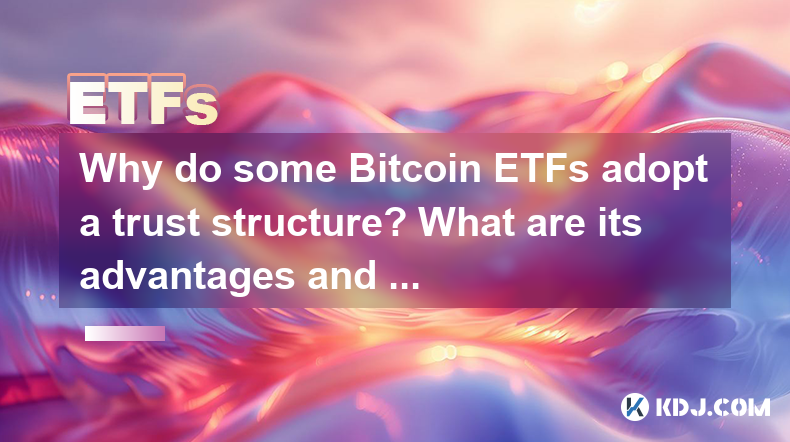
Bitcoin Exchange Traded Funds (ETFs) have become a popular way for investors to gain exposure to the cryptocurrency market without directly owning the underlying assets. Among the various structures that Bitcoin ETFs can adopt, the trust structure is one that has garnered significant attention. In this article, we will explore why some Bitcoin ETFs adopt a trust structure, as well as the advantages and disadvantages associated with this approach.
What is a Trust Structure in Bitcoin ETFs?
A trust structure in the context of Bitcoin ETFs refers to a legal arrangement where a trustee holds the assets on behalf of the investors. The trust is created to manage and safeguard the Bitcoin holdings, ensuring that the investors' interests are protected. This structure is different from other types of ETFs, such as those that use a grantor trust or a commodity pool.
Reasons for Adopting a Trust Structure
Bitcoin ETFs may adopt a trust structure for several reasons. One primary reason is regulatory compliance. In many jurisdictions, the trust structure is more familiar to regulators and may be easier to navigate through the approval process. Additionally, the trust structure can provide a higher level of investor protection, as the trustee is responsible for managing the assets and ensuring that they are held securely.
Another reason for adopting a trust structure is operational simplicity. Managing a trust can be less complex than other structures, as the trustee handles the day-to-day operations, including the buying and selling of Bitcoin. This can be particularly beneficial for smaller ETFs that may not have the resources to manage a more complex structure.
Advantages of a Trust Structure
The trust structure offers several advantages for Bitcoin ETFs. One significant advantage is the potential for increased investor confidence. Investors may feel more secure knowing that their assets are held by a professional trustee, who is responsible for safeguarding the Bitcoin holdings. This can be particularly important in the volatile cryptocurrency market, where security and trust are paramount.
Another advantage of the trust structure is flexibility. The trust can be structured to meet the specific needs of the ETF, allowing for customization in terms of fees, redemption policies, and other operational aspects. This flexibility can be beneficial for ETFs that want to tailor their offerings to meet the demands of their target market.
Additionally, the trust structure can provide tax benefits. In some jurisdictions, the trust structure may be more tax-efficient than other structures, potentially reducing the tax burden on investors. This can be a significant advantage for investors looking to maximize their returns.
Disadvantages of a Trust Structure
Despite the advantages, the trust structure also has some disadvantages that Bitcoin ETFs need to consider. One potential disadvantage is the lack of direct ownership. Investors in a trust do not directly own the underlying Bitcoin; instead, they own shares in the trust. This can be a concern for investors who prefer to have direct control over their assets.
Another disadvantage is potential regulatory challenges. While the trust structure may be more familiar to regulators, it can still face scrutiny and potential delays in the approval process. This can be a significant hurdle for ETFs looking to launch quickly and efficiently.
Additionally, the trust structure can be less transparent than other structures. Investors may have limited visibility into the operations of the trust, including the management of the Bitcoin holdings. This lack of transparency can be a concern for investors who value openness and accountability.
Operational Considerations for Trust Structures
When implementing a trust structure for a Bitcoin ETF, there are several operational considerations that need to be addressed. Choosing the right trustee is crucial, as the trustee will be responsible for managing the assets and ensuring compliance with regulatory requirements. The trustee should have a strong track record in managing similar assets and a deep understanding of the cryptocurrency market.
- Establish clear policies and procedures: The trust should have well-defined policies and procedures for the buying, selling, and safeguarding of Bitcoin. This includes setting up secure storage solutions and implementing robust cybersecurity measures to protect against hacks and theft.
- Implement a robust auditing process: Regular audits should be conducted to ensure that the trust is operating in accordance with its stated objectives and that the Bitcoin holdings are accurately reported. This can help to build investor confidence and maintain the integrity of the trust.
- Maintain transparent communication: The trust should maintain open and transparent communication with investors, providing regular updates on the performance of the Bitcoin holdings and any changes to the trust's operations. This can help to build trust and foster a strong relationship with investors.
Case Studies of Bitcoin ETFs with Trust Structures
Several Bitcoin ETFs have adopted a trust structure, providing valuable insights into the practical application of this approach. One notable example is the Grayscale Bitcoin Trust (GBTC), which is one of the largest and most well-known Bitcoin investment vehicles. GBTC operates as a trust, with Grayscale Investments serving as the sponsor and Coinbase Custody Trust Company as the custodian of the Bitcoin holdings.
Another example is the Purpose Bitcoin ETF (BTCC), which is listed on the Toronto Stock Exchange. BTCC also operates as a trust, with Gemini Trust Company serving as the custodian of the Bitcoin holdings. Both of these ETFs have successfully navigated the regulatory landscape and have attracted significant investor interest, demonstrating the viability of the trust structure in the Bitcoin ETF market.
Frequently Asked Questions
Q: Can investors in a Bitcoin ETF with a trust structure redeem their shares for actual Bitcoin?
A: In most cases, investors in a Bitcoin ETF with a trust structure cannot redeem their shares directly for Bitcoin. Instead, they can buy and sell shares on the secondary market, similar to trading stocks. However, some trusts may offer periodic redemption windows or other mechanisms for investors to access the underlying Bitcoin.
Q: How does the trust structure impact the liquidity of a Bitcoin ETF?
A: The trust structure can impact the liquidity of a Bitcoin ETF, as the ability to create and redeem shares may be more limited compared to other structures. However, the liquidity of the ETF is also influenced by factors such as trading volume, market demand, and the overall liquidity of the Bitcoin market.
Q: Are there any specific regulatory requirements that Bitcoin ETFs with a trust structure must comply with?
A: Yes, Bitcoin ETFs with a trust structure must comply with various regulatory requirements, which can vary depending on the jurisdiction. These requirements may include registration with the relevant securities regulator, adherence to anti-money laundering and know-your-customer rules, and regular reporting and disclosure obligations.
Q: How does the trust structure impact the fees associated with a Bitcoin ETF?
A: The trust structure can impact the fees associated with a Bitcoin ETF, as the trustee may charge a fee for managing the assets and ensuring compliance with regulatory requirements. Additionally, the trust may have other operational costs, such as storage and auditing fees, which can be passed on to investors. The specific fee structure will depend on the terms of the trust and the agreements with the trustee and other service providers.
Disclaimer:info@kdj.com
The information provided is not trading advice. kdj.com does not assume any responsibility for any investments made based on the information provided in this article. Cryptocurrencies are highly volatile and it is highly recommended that you invest with caution after thorough research!
If you believe that the content used on this website infringes your copyright, please contact us immediately (info@kdj.com) and we will delete it promptly.
- Vaulta Emerges from Its Past with a Renewed Focus on Practical Finance and Compliance-First Blockchain Infrastructure
- 2025-04-15 04:50:13
- Render Network (RNDR), SEI and Bittensor (TAO) lead crypto AI sector despite 5% daily drop
- 2025-04-15 04:50:13
- HYPE is showing early signs of a bullish reversal, with a potential inverse head and shoulders pattern forming
- 2025-04-15 04:45:13
- BlockDAG (BDAG) Captures Developer Attention with Complete Smart Contract Features and Growing $214M Presale
- 2025-04-15 04:45:13
- title: RWA-Focused Crypto Project MANTRA (OM) Loses $5.431B of Market Cap in Overnight Collapse of Its Native Token
- 2025-04-15 04:40:15
- Trump's Tariffs Just Supercharged Bitcoin – Here's What's Coming
- 2025-04-15 04:40:15
Related knowledge
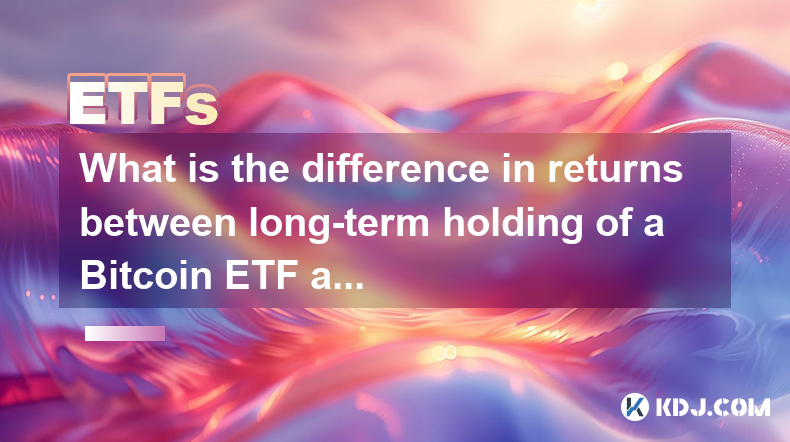
What is the difference in returns between long-term holding of a Bitcoin ETF and holding Bitcoin directly?
Apr 09,2025 at 04:15am
When considering the difference in returns between long-term holding of a Bitcoin ETF and holding Bitcoin directly, it's essential to understand the nuances and factors that affect each investment option. Both approaches have their unique advantages and potential drawbacks, which can significantly impact the overall returns over time. Understanding Bitc...
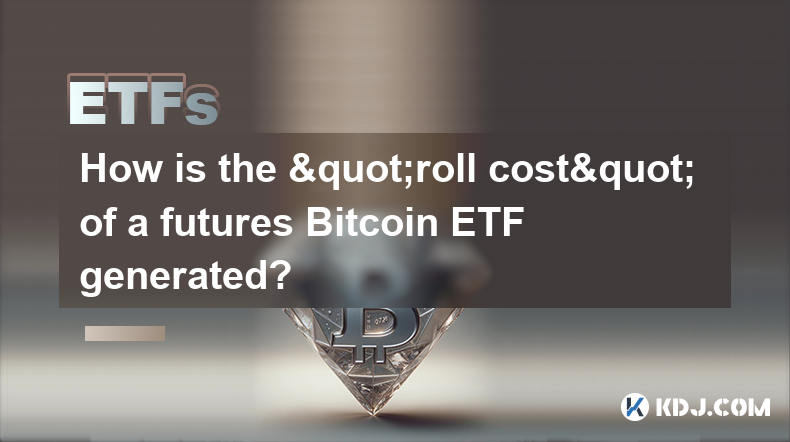
How is the "roll cost" of a futures Bitcoin ETF generated?
Apr 08,2025 at 01:22pm
The 'roll cost' of a futures Bitcoin ETF is a critical concept for investors to understand, as it directly impacts the performance of the ETF. In this article, we will delve into the mechanics of how the roll cost is generated, exploring the underlying processes and factors that contribute to this cost. Understanding Futures ContractsFutures contracts a...
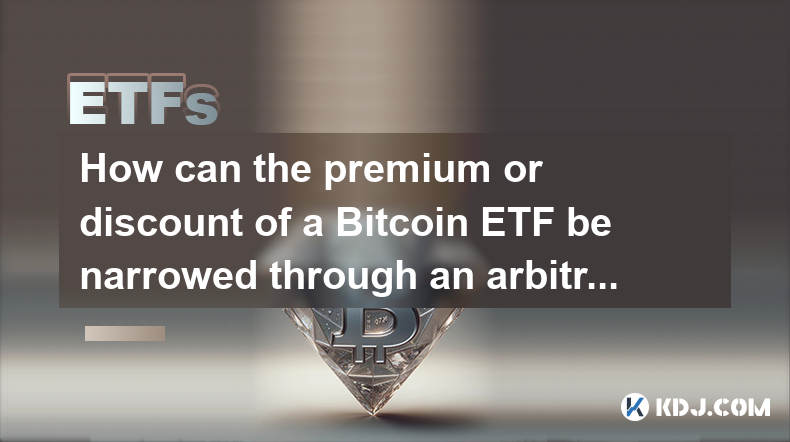
How can the premium or discount of a Bitcoin ETF be narrowed through an arbitrage mechanism?
Apr 09,2025 at 12:07am
Arbitrage mechanisms play a crucial role in narrowing the premium or discount of a Bitcoin Exchange Traded Fund (ETF). Understanding how these mechanisms work can provide valuable insights into the dynamics of Bitcoin ETFs and their relationship with the underlying asset. This article will delve into the specifics of how arbitrage can be used to align t...

What factors affect the bid-ask spread of a Bitcoin ETF?
Apr 08,2025 at 08:50pm
The bid-ask spread of a Bitcoin Exchange Traded Fund (ETF) is a critical metric that investors and traders closely monitor. It represents the difference between the highest price a buyer is willing to pay (bid) and the lowest price a seller is willing to accept (ask). Several factors influence this spread, and understanding them can help investors make ...
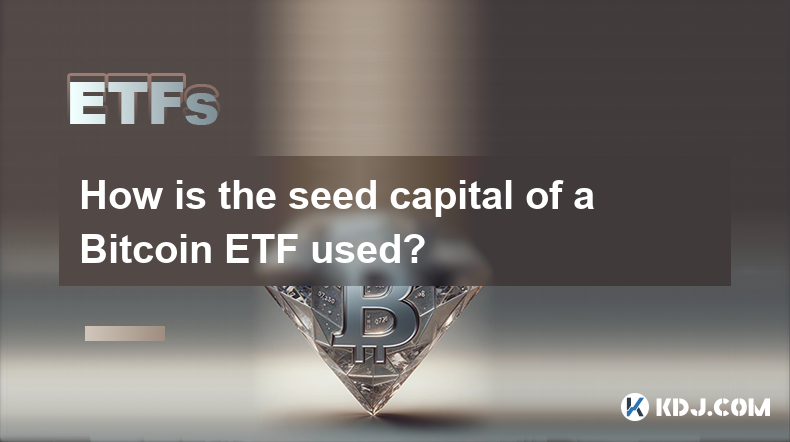
How is the seed capital of a Bitcoin ETF used?
Apr 10,2025 at 02:15pm
The seed capital of a Bitcoin ETF plays a crucial role in the establishment and operation of the fund. This initial investment is used to create the fund's underlying assets, manage operational costs, and ensure the ETF can start trading on an exchange. Understanding how this seed capital is utilized provides insight into the mechanics of Bitcoin ETFs a...
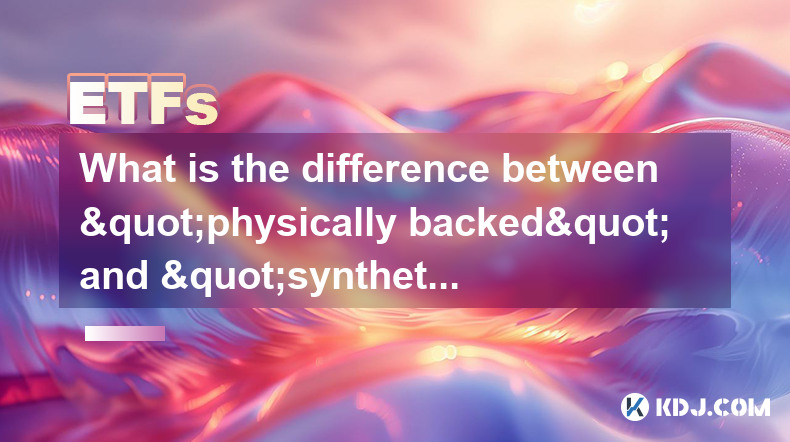
What is the difference between "physically backed" and "synthetic" Bitcoin ETFs in terms of holding assets?
Apr 10,2025 at 04:56pm
Bitcoin Exchange Traded Funds (ETFs) have become a popular way for investors to gain exposure to the cryptocurrency market without directly owning the underlying asset. There are two primary types of Bitcoin ETFs: physically backed and synthetic. Understanding the differences between these two types, particularly in terms of how they hold assets, is cru...

What is the difference in returns between long-term holding of a Bitcoin ETF and holding Bitcoin directly?
Apr 09,2025 at 04:15am
When considering the difference in returns between long-term holding of a Bitcoin ETF and holding Bitcoin directly, it's essential to understand the nuances and factors that affect each investment option. Both approaches have their unique advantages and potential drawbacks, which can significantly impact the overall returns over time. Understanding Bitc...

How is the "roll cost" of a futures Bitcoin ETF generated?
Apr 08,2025 at 01:22pm
The 'roll cost' of a futures Bitcoin ETF is a critical concept for investors to understand, as it directly impacts the performance of the ETF. In this article, we will delve into the mechanics of how the roll cost is generated, exploring the underlying processes and factors that contribute to this cost. Understanding Futures ContractsFutures contracts a...

How can the premium or discount of a Bitcoin ETF be narrowed through an arbitrage mechanism?
Apr 09,2025 at 12:07am
Arbitrage mechanisms play a crucial role in narrowing the premium or discount of a Bitcoin Exchange Traded Fund (ETF). Understanding how these mechanisms work can provide valuable insights into the dynamics of Bitcoin ETFs and their relationship with the underlying asset. This article will delve into the specifics of how arbitrage can be used to align t...

What factors affect the bid-ask spread of a Bitcoin ETF?
Apr 08,2025 at 08:50pm
The bid-ask spread of a Bitcoin Exchange Traded Fund (ETF) is a critical metric that investors and traders closely monitor. It represents the difference between the highest price a buyer is willing to pay (bid) and the lowest price a seller is willing to accept (ask). Several factors influence this spread, and understanding them can help investors make ...

How is the seed capital of a Bitcoin ETF used?
Apr 10,2025 at 02:15pm
The seed capital of a Bitcoin ETF plays a crucial role in the establishment and operation of the fund. This initial investment is used to create the fund's underlying assets, manage operational costs, and ensure the ETF can start trading on an exchange. Understanding how this seed capital is utilized provides insight into the mechanics of Bitcoin ETFs a...

What is the difference between "physically backed" and "synthetic" Bitcoin ETFs in terms of holding assets?
Apr 10,2025 at 04:56pm
Bitcoin Exchange Traded Funds (ETFs) have become a popular way for investors to gain exposure to the cryptocurrency market without directly owning the underlying asset. There are two primary types of Bitcoin ETFs: physically backed and synthetic. Understanding the differences between these two types, particularly in terms of how they hold assets, is cru...
See all articles























































































